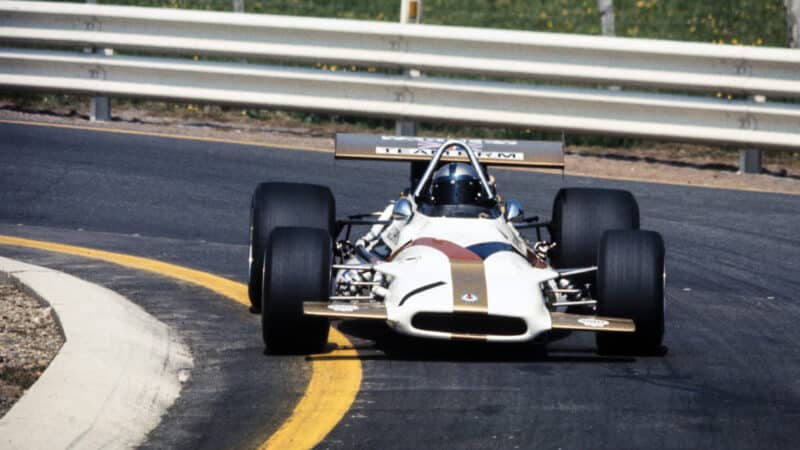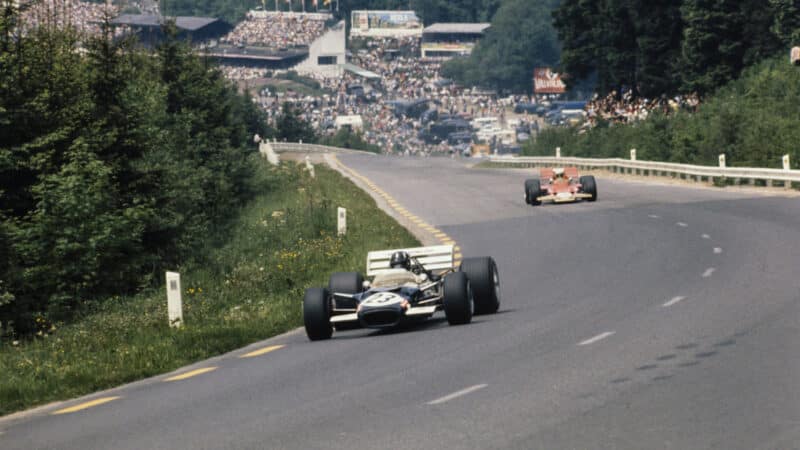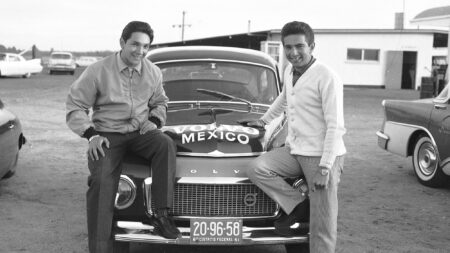But Jackie had not enjoyed himself. “In current terms the circuit is antiquated,” he said afterwards. “There are a lot of defects in the bends, at Masta for example, where guardrails should be added. You can be sure that, even if some drivers say they take it at full speed, no-one actually dares to do so. It’s a fast and dangerous circuit, and we therefore treat it with respect.” But JYS would neither win nor star in the race the next day, and even his prodigious speed and mettlesome courage would be eclipsed by those who did.
Race day dawned clear and dry, and it was Chris Amon who took the lead at the start, forcing his March 701 from its P3 grid slot ahead of Stewart’s March and Rindt’s Lotus. But soon a new challenger entered the fray. From sixth on the grid Pedro Rodríguez had begun a charge, and by lap four he had scythed his BRM P153 up to second place. By lap five he was on Amon’s tail, and by lap six he had taken the lead. He celebrated by blitzing his next lap in 3min 30.8sec (an average of 149.5mph [240.6km/h]).
Rodríguez had won an F1 grand prix before, but only one, in a Cooper-Maserati, at Kyalami in 1967. Amon had never won one, but he fancied his chances at Spa in 1970. Their battle was relentless and intense. The two men ran flat-out all the way, and, as they began their 28th and final lap, Rodríguez was a smidgen more than three seconds ahead. But Amon was not done yet, and the old Spa lap was a long one.

The Spa win was one of Rodríguez’s two F1 victories
Over that last 8.761 miles (14.099km) he hurled his little Cosworth V8-engined March after the gruntier V12-powered BRM, gaining with every turn – and taking the Masta Kink flat, and damn the consequences, whatever JYS said later – but by flag-fall he was still 1.1sec behind. Nonetheless, he had posted the race’s fastest lap, stopping the watches after only 3min27.4sec had elapsed, which was six tenths faster even than Stewart’s brilliant pole lap the day before and worked out at an average speed of 152.0mph (244.6km/h).
Rodríguez would not win a world championship-status F1 grand prix again, and Amon famously never did. But on fast and challenging circuits they were both often mesmerisingly good. Rodríguez was an old Spa specialist in fact – and, sure enough, other than an attrition-aided second place at Watkins Glen at the end of the year, he would rarely trouble the F1 scorers again in 1970.





